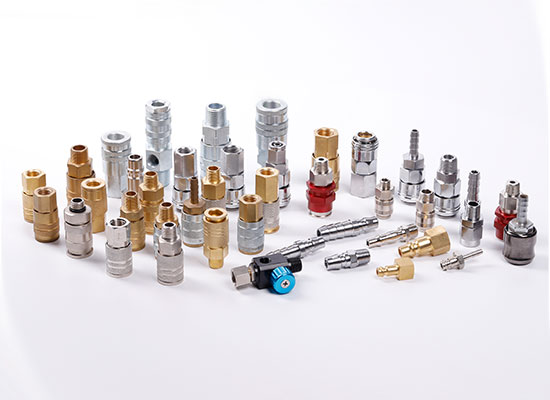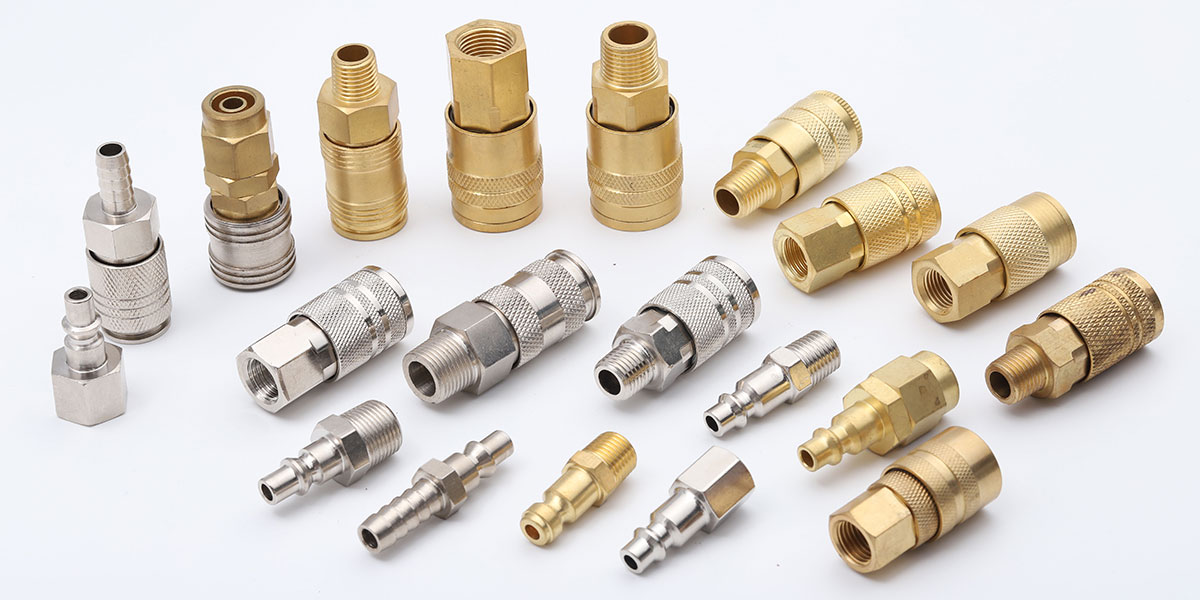
If you use push-to-connect fittings in tools or pipelines that require frequent connecting and disconnecting, it may cause claw wear, requiring timely replacement and maintenance. Pneumatic quick couplings are better suited for frequent plug-and-play of pneumatic tools. Their valve core design reduces air consumption, and the fittings are mostly made of lightweight metal, providing greater strength and improved sealing.
A pneumatic quick coupling is another type of pneumatic fitting,connecting component used between pipelines or between a pipeline and other air operated system elements.Pneumatic quick-connect fittings consist of two parts: a male plug and a female socket. Therefore, their connection speed is slightly lower than that of push-to-connect fittings. However, due to differences in materials and internal structure, pneumatic quick-connect fittings offer superior sealing and durability.
The primary feature of pneumatic quick couplings is their ability to easily connect and disconnect air lines, often with a simple push-pull action or a locking mechanism, saving time and improving operational efficiency.
Most pneumatic quick couplings are designed to minimize air leaks when disconnected, ensuring that the system remains efficient and air loss is minimized.
They come in various sizes, thread types, and materials, allowing them to be customized to different applications. Common sizes include 1/4", 3/8", and 1/2" and different standards like American, European, Japanese, British, and Israel types.
Pneumatic quick couplings are generally made of robust materials, such as brass, stainless steel, or aluminum, to ensure long-lasting performance in demanding environments.
Many pneumatic quick couplings are designed to handle high pressures, withstanding pressure fluctuations in the system without failure.
Especially in outdoor or harsh environments, materials are often chosen for their resistance to corrosion, ensuring reliable performance over time.
Some couplings are designed with a safety valve or lock to prevent accidental disconnection during operation, reducing the risk of accidents.
Different coupling mechanisms, such as ball-locking, push-to-connect, and screw-on designs, cater to specific operational needs and preferences.
Pneumatic quick couplings are often standardized to ensure compatibility across different brands and systems, providing greater flexibility for users.
These couplings are typically lightweight, making them easy to handle and integrate into various pneumatic systems without adding unnecessary bulk.
◆ American Type Pneumatic Quick Coupling
◆ European Type Pneumatic Quick Coupling
◆ Japanese Type Pneumatic Quick Coupling
◆ British Type Pneumatic Quick Coupling
◆ IS Series Israel Type Pneumatic Quick Coupling

Links: www.fescolo.com(Pneumatic)
FOKCA ©1998-2025 All Rights Reserved Sitemap